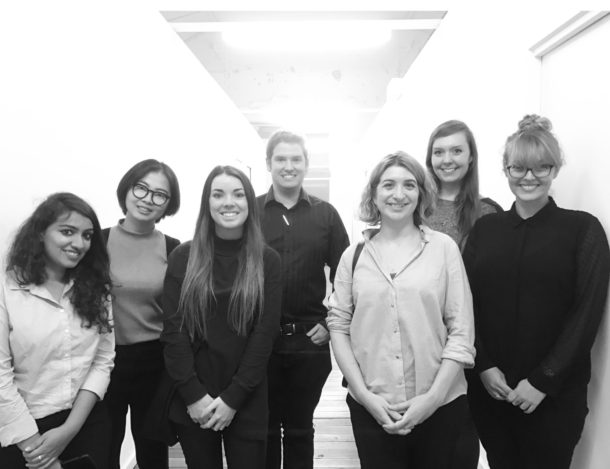May 2017
We are continuing to work through the list of Institute policies that need updating, with ongoing consultation with members to ensure we are dealing with the issues that matter most to members and effectively communicating our messages to governments and the public. New policies can be developed at the instigation of the chapters, national committees and National Council.
Since our last update, we have also advocated at a national and local level on several issues:
The National Council signed off on 4 new policies at its March and May meetings.
Affordable Housing
We are advocating for more flexible and diverse housing solutions, with new housing stock to be integrated with transport and social infrastructure. We are advocating that the architectural profession offers the design and problem solving skills to deliver more affordable, dignified and accessible housing, reducing both upfront and ongoing costs.
Indigenous Housing
We are advocating that because the standard of Indigenous housing and essential infrastructure remains well below that available to the non-Indigenous population, we must building more housing for Indigenous communities, and better maintain existing stock. We believe that housing decisions must reside with local communities and job creation must be valued equally to timely and economic delivery. Architects can make a significant contribution to these priorities.
Multi-Residential Standards
We argue that the most effective way of housing more people in our cities and regional towns is to plan for greater density within the current urban footprint. This must be accompanied by minimum quality standards that require architects and developers to design and build dense, multi-residential buildings that provide a good quality of living for residents, and suitable public amenity.
Work Experience and Internships
We believe that all members of the architecture profession – students, graduates and registered architects – should be supported, valued and paid fairly. The policy sets out when vocational work placements should be entered into and some of the criteria that is applied under the Fair Work Act that should be applied.
Chapters and National office bearers and staff will be promoting these views in submissions and meetings with government and other associations and forums. Member comment is always welcome, please email feedback to policy@architecture.com.au and look out for new policies being released for comment.
Feel free to download the documents and use them in any conversations about these issues. Policy documents can be downloaded here. The style and size of the policy documents are a little different to previous documents. The new style provides statements of principle that clearly outline what we as an Institute endorse and they are about one page in length. These have been through a consultation process with experts and members, with comments received through our member-only policy web portal and through our chapter committees.
Australian and New Zealand Architecture Program Accreditation
The Western Australian Chapter Education Committee submitted comments to the review of the Australian and New Zealand Architecture Program Accreditation Procedure (ANZAPAP). As well as several specific matters, the chapter expressed concern about the process of consultation, including the omission of some parts of the proposed new procedure, and the limited number of stakeholders invited to take part in the consultation.
Industry participation
The South Australian Government is proposing to strengthen its support for local industry and jobs by enshrining in law the role of industry advocate, which would be dedicated to helping South Australian companies tender for government projects and ensuring contractors abide by their commitments. The South Australian Chapter recently lodged a formal submission on the draft Industry Advocate Bill 2017 and the revised South Australian Industry Participation Policy and Procedural Guidelines. The chapter has offered broad support, with a number of recommendations on specific aspects of the Bill. The submission points to the relevance of the architecture profession to the built environment, particularly the potential for design, specifications and procurement policy to be better used to support the government’s objective of boosting economic benefits through a greater use of local supply inputs and, ultimately, local jobs.
STEM project forums
The South Australian Government last year introduced the STEM Works Program, as part of a push to provide upgraded or new science, technology, engineering and mathematics facilities for primary and secondary schools. The South Australian Chapter, together with the Association of Consulting Architects (ACA), has conducted a survey of members working on STEM projects to gather statistical information on the program, where and if the process has experienced delays and in what areas to focus attention to speed up commencement and completion of projects. This will allow the provision of quantitative and qualitative data to the South Australian Government.
Proposed amendments to AS 4122
The South Australian Chapter, together with the ACA and Consult Australia, has had a number of discussions with the Department of Planning, Transport and Infrastructure regarding proposed changes to the AS 4122 contract used for the procurement of consultants. The aim is to ensure that the contract remains as standard as possible while acknowledging the department’s specific requirements.
Draft Minister’s Code – Upgrading the health and safety of existing buildings
The South Australian Chapter has also provided a formal submission to the Department of Planning, Transport and Infrastructure on the draft Minister’s Code – Upgrading the health and safety of existing buildings. The chapter has welcomed the release of the code, saying it has the potential to address aspects of the current system that are ineffective or poorly understood. However, the chapter says the document, as it stands, does not constitute a significant change from the status quo and has recommended some clarification and amendments.





